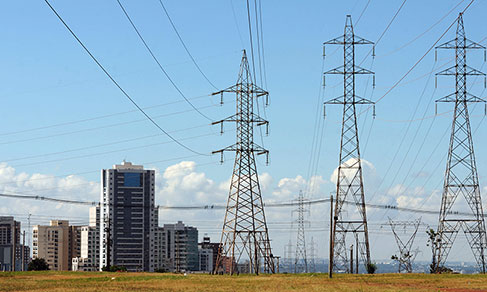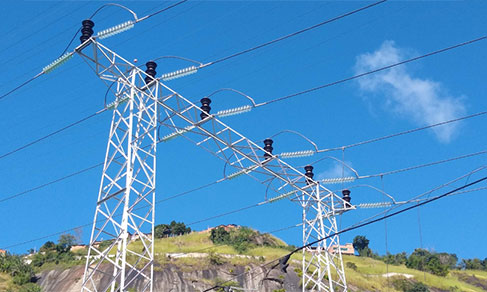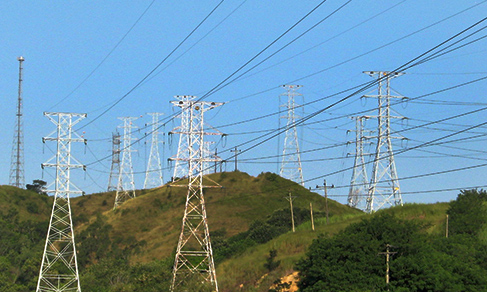|
Technical Information News and Releases Additional information Links Main results - September 2025
#seriehistorica20179414620381
#tabelasidra20185415321105 Tables - September 2025Extended Consumer Price Index-15 - IPCA-15
General Results
Results by subitem (in xls) Concepts and methods - September 2025 As informações a seguir descrevem os metadados estatísticos, que são o conjunto de conceitos, métodos e aspectos relacionados às estatísticas, e são informações necessárias para compreender as características e a qualidade das estatísticas e interpretá-las corretamente. Informações GeraisObjetivoO IPCA-15 tem por objetivo medir a inflação de um conjunto de produtos e serviços comercializados no varejo, referentes ao consumo pessoal das famílias, cujo rendimento varia entre 1 e 40 salários mínimos, qualquer que seja a fonte de rendimentos. Esta faixa de renda foi criada com o objetivo de garantir uma cobertura de 90 % das famílias pertencentes as áreas urbanas de cobertura do SNIPC, qualquer que seja a fonte dos rendimentos. Tipo de operação estatística Pesquisa de preços e custosTipo de dadosDados de pesquisa por amostragem não probabilísticaPeriodicidade de divulgação MensalPopulação-alvo A população objetivo do IPCA-15 é representada pelas famílias residentes em áreas urbanas com rendimento familiar monetário compreendido entre 1 e 40 salários mínimos mensais, qualquer que seja as fontes de rendimento. MetodologiaDe maneira geral, o escopo metodológico do IPCA abrange os seguintes temas: montagem da estrutura geral de pesos; definição das bases cadastrais de produtos e locais; coleta de preços e método de cálculo. Temas e subtemas Preços e custosPrincipais variáveis - Preço Unidade de investigação EstabelecimentoUnidade de análise Estabelecimento. Períodos de referênciaMês - 16/08/2025 a 15/09/2025Data de início da coleta 15/08/2025Data do fim da coleta 15/09/2025 DisseminaçãoFormas de disseminação Banco de Dados Agregados - SIDRA, Publicação Digital (online)Nível de divulgação São divulgados os índices gerais, por grupos de produtos, subgrupos, item e subitens, para as regiões pesquisadas, além do agregado Brasil. Instrumentos de coletaIPCA15 - Métodos Para o Trabalho de Campo do Sistema Nacional de Índices de Preços – Manual de Entrevista . HistóricoO Sistema Nacional de Índices de Preços ao Consumidor (SNIPC) foi concebido em 1978, constituindo-se numa combinação de processos destinados a produzir índices de preços ao consumidor nacionais, a partir da agregação de resultados regionais. Foi criado com o propósito de garantir uma mesma concepção metodológica no que diz respeito à fórmula de cálculo, pesquisas básicas, bases cadastrais de produtos e locais, montagem da estrutura de pesos e método de cálculo. Desde sua origem, foram incorporados e desativados alguns índices de preços do SNIPC, que apresenta em sua configuração atual os seguintes índices de preços: IPCA, IPCA-15, IPCA-E e INPC. Publications - September 2025 Description The National System of Consumer Price Indexes - SNIPC produces - continuously and systematically - consumer price indexes and, in this production, has, as data collection units, commercial and service-rendering establishments, concessionaires of public Internet services. Having been first available on the Internet in May 2000, the Extended National Consumer Price Index 15 - differs from the Extended National Consumer Price Index - IPCA only in terms of geographic coverage and of the data collection period. The former considers, in general, from day 16 of the previous month to day 15 of the month of reference. Currently, the target population of the IPCA-15 is formed by families whose income ranges from 1 to 40 minimum wages, whatever the source, living in urban areas included in the SNIPC, which are: the metropolitan areas of Belém, Fortaleza, Recife, Salvador, Belo Horizonte, Rio de Janeiro, São Paulo, Curitiba, Porto Alegre, and also the Federal District and the municipality of Goiânia. The Special Extended Consumer Price Index - IPCA-E was created in December 1991 and, from January 1995 on, started to be released every quarter. This way, the IPCA-E is the cumulative quarterly result of the IPCA-15. Data Collection Calendar - Year 2021 Month PeriodJanuary Dec 12th - Jan 14th February Jan 15th - Feb 11th March Feb 12th - Mar 15th April Mar 16th - Apr 13th May Apr14th - May 13th June May 14th - Jun 14th July Jun 15th - Jul 13th August Jul 14th - Aug 13th September Aug 14th - Sep 14th October Sep 15th - Oct 13th November Oct 14th - Nov 12th December Nov 13th - Dec 13th January 2022 Dec 14th - Jan 13th Time seriesComplete table - Time series
#tabelasidra20171059250329
#tabelasidra20171059847447
Downloads Caso os arquivos não sejam exibidos, clique aqui para acessá-los através da página FTP. Technical InformationTechnical Notes 2018 2017 2016 2015 Previous Years Methodological Notes - Calculation methodology
Methodology for the calculation of inflation of the SNIPC subitems "Domestic Worker" and "Manpower for Domestic Repair" based on information on income of the Continuous PNAD. Structure of regional weights, by areas surveyed IPCA / INPC - 2009
Surveyed Areas
Weight
Source: IBGE, Diretoria de Pesquisas, Coordenação de Índices de Preços. 1 IBGE - Rendimento Monetário mensal familiar disponível (POF 2008-2009). 2 IBGE - População residente urbana (POF 2008-2009). Methodological Notes - Non seasonaly-adjusted IPCA
Seasonal Adjustment of Extended Consumer Price Indexes - IPCA/1998 The methodological update aimed at providing users with instruments that help understand the inflation phenomenon is a relevant aspect in the production of consumer price index. In this respect, the issue of seasonal adjustment of series of Consumer Price Indexes produced by the IBGE has been part of a project developed by the Department of Price Indexes - DESIP, the main results of which are now being released. The objective of the project is to release seasonally-adjusted Conumer Price Indexes that make it possible to interpret information on inflation, without seasonal influences, at both regional and national levels. Seasonal changes are periodic and intra-annual movements caused by climatic or institutional (Easter's, Carnival, etc.) calendars. Seasonal products are those which present well-defined cycles of production, consumer nd prices. In summary, there times of the year when their availability in retail markets is reduced, with high prices; sometimes it is excessive, with low prices. As a result, there is a combination of a reduced level of consumption and high prices and vice-versa. It is worth highlighting that the production and release of seasonally-adjusted series is based on the production of additional statistics that: make it possible to have a bettr understanding of the factors that determine price movements; guide the decision-making process of economic agents, once it makest it possible to distinguish movements occurred in the year, caused by seasonal phenomena, either long-lasting or trend-related ones; help in the establishment of government and sector policies that have the objective of eliminating the influence of seasonal movements by means, for example, of the import of products and maintenance of regulating stocks; enable, together with other indicators, the elaboration of macroeconomic studies. It is worth mentioning that the seasonal products identified belong to the following groups: Food and Beverages and Wearing Apparel and have their most significant impacts in the months of January, April and August, approximately. It is worth mentioning that the annual results (cumulative in the year) of the two series (original and adjusted) are the same. That is due to the fact that the seasonal adjustment takes place within the year (below the average in some months and above in others), which consequently leads to an annual inflation that is the same as in the original series. The results of Seasonally-Adjusted Indexes are obtained from the procedure with X11-ARIMA - Estela B. Dagum of the "Time Series Research anda Analysis Division, Statistics Canadá"- PC version. The methodology of the adjustment can be found in Seasonal Adjustment of Consumer Price Indexes - IBGE/DESIP/RECON - of May 1996. The IBGE presents the original and adjusted IPCA series, and provides to users one more analytical instrument that is fundamental for the interpretatiom of the inflation phenomenon. Analysis of the Seasonal Adjustment in the Year It is known that a long-lasting process of stabilization of prices leads to the absence of indexation, mainly that based on the previous inflation (inertial). So, variation at inflation level, in the short-term, can be influenced by the impact of external factors such as: rise of agriculturalprices motivated by accidental reasons (draught, floods, etc.), correction of administered prices (public or private) and by seasonal movements, among others. The seasonal aspect of consumer price indexes, in retail trade, have a clear behavior throughout the year and can be described as follows: in the first semester of the year, the seasonal aspect contributed to the increase of inflation; in the second semester, the phenomenon is inverted in terms of seasonality, thus contributing to the fall of prices. In the first semester, the upward pressure on inflation that comes from the seasonal adjustment is mainly motivated by the in-between period and the subsequent scarcity of agricultural products. This semester, there is also the influence of seasonal movements of some products in the group Wearing Appparel, which can be described as: in the first quarter (end of Febrary until March), the sales of products in summer collections, which are so coomon at this type of the year, lead to a movement of deceleration and/or fall of prices that reduce, to some extent, the pressuer exerted by seasonal agricultural products in the period between harvests; in the second quarter (April/June), the prices of some seasonal products in Wearing Apparel, mainly winter items, which that exert contributions on prices, due to the new winter collections launched. That behavior reinforces the impact o the prices of the seasonal phenomenon in the first semester. In the second semester of the year, seasonality leads inflation downward. Most seasonal food products have their mais supply concentrated in tjhis semester, except beef, with the period between crops occurs in the second semester. Seasonal items of winter Wearing Apparel start in July/August and keed prices reduced until the end of August, the period when most sales take place. Summer collections are launched in the beginning of September, but the intensity of price changes (increase) are below those in the launch of winter fashion, as well as the changes (fall) in the prices of food products. That behevior enables the seasonal adjustment to contribute to the deceleration/decrease of inflation in the second semester of each year. In summary, the prices of seasonal products are igher in the first semester of the year. For this reason, the seasonally-adjusted series shows that, in tis period of year, there is also a lower level of inflation in relation to the original series. In the second semester, the opposite takes place. The behavior described above reveals one of the characteristics of the seasonal phenomenon: seasonality is an intra-annual phenomenon, which is repeated quite regularly in some months of the year, every year. This seasonal behavior is well-known by "policy-makers", market analysts, and consumers. Nevertheless, what is relevant to identify is the magnitude of this phenomenon and can check what is really happening in terms of change of relative prices, when the seasonal component is isolated. That enables a more accurate evaluation, for example, of the effectiveness of short-term economic policies, with reference to impacts on the inflation component. In this respect, the release of seasonally-adjusted IPCA is intended to fill an important gap in terms of the analysis of the inflation process. Methodological Notes - IPCA/INPC
1. Descriptions - Summarized description The National System of Consumer Price Indexes - SNIPC consists of a combination of processes aimed at the production of consumer price indexes. The objective is to monitor price variation of group of products and services consumed by families. The system encompasses the metropolitan areas of Rio de Janeiro, Porto Alegre, Belo Horizonte, Recife, São Paulo, Belém, Fortaleza, Salvador and Curitiba, besides the Federal DIstrict and the municipality of Goiânia. The national index results from an aggregation of regional indexes relative to one same range of income. The monthly indexes come, in general, from the comparison of prices in effect on the 30 (thirty) days in the period of reference and the 30 (thirty) days of the base-period. The full data collection takes place every period of 30 (thirty) days whch is segmented, without interruptions, into 4 (four) subperiods. Each one of them has about 7 (seven) days with dates defined by the Annual SNIPC Data Collection Calendar. In a subperiod there is the collection of a fixed one-fourth of the establishments. That way it is possible to obtain from the system indexes with base and reference periods of 30 (thirty) days at the end of each group of four subperiods. The indexes can be obtained for several target-populations once the corresponding weighting structure are available for each range of monthly household income. From a time-related point-of-view, besides the monthly indexes, it is possible to calculated the price changes for 2 (two) or more months, based on the time-series produced. Ii is worth highlighting that the way the system is arranged leads to several possible ways of calculating the index. The National Consumer Price Indexes available are detailed below: National Consumer Price Index - INPC and Extended National Consumer Price Index - IPCA - Current description The INPC and the IPCA are calculated on an ongoing and systematic basis for the areas covered by the system. The target-population of the INPC refers to families living in urban localities of the areas covered by the SNIPC with income ranging between 1 (one) to 6 (six) minimum wages, with a salaried householder; that of the IPCA refers to familie living in urban localities of the areas covered by the SNIPC with income ranging between 1 (one) and 40 (forty) minimum wages, whatever the source of income. The following set of basic information is used in the basic survey for each region: Consumer Expenditure Survey - POF It was conducted between July 2002 and June 2003. The survey provided the weighting structures for the target-populations. Survey of Purchase Places - PLC It was conducted from May to June 1988. The survey provided the register of survey representatives, on an ongoing basis. Survey of Specification of Products and Services - PEPS Conducted in the period of implementation of each one of the areas for all the products and services present in the weighting structure. It provided the list of products and services surveyed, which is permanently updated with the objective of monitoring the market dynamics. 2. Main variables investigated and Survey units The prices obtained are those effectively charged to the consumer for on-demand payment. The survey is conducted in commercial establishments, services renderers, hhousing units and public service concessionaires. 3. Geographic coverage Metropolitan areas of Rio de Janeiro, Porto Alegre, Belo Horizonte, Recife, São Paulo, Belém, Fortaleza, Salvador e Curitiba, besides the Federal District and the municipality of Goiânia. 4. Frequency Monthly 5. Methodology The indexes are calculated for each area. Considering prices collected monthly, in the first step, the estimates of price variation for each products surveyed are obtained. Those estimates result from the calculation of the simple mean of the prices in places where sample prices are obtained. The prices collected in two consecutive months are used to reach the mean figure. By aggregating the relative figures of products by means of the geometric mean it is possible to calculate the price variation for each subitem, which is the smallest aggregation of the index that has an explicit weighting. Then the Laspeyres is applied in order to obtain all the other levels of aggregation for the structure item, subgrou, group and the overall index for the area. The national indexes INPC and IPCA are calculated according to regional results, by means of a weighted arithmetic mean. The weighting variable for the INPC is "Urban Resident Population" (Consumer Expenditure Survey - POF - 2002-2003) and that of the IPCA is "Disposable Household Income" (Consumer Expenditure Survey - POF - 2002-2003). 6. Data collection period Data collection for the IPCA usually takes place between the 1st and the 30th day of the reference month. 7. Time gap between the collection and the release of data About 8 (eight) business days. 8. Start of the survey January/1979 - Rio de Janeiro; June/1979 - Porto Alegre, Belo Horizonte and Recife; January/1980 - São Paulo, Brasília and Belém; October/1980 - Fortaleza, Salvador and Curitiba; January/1991 - Goiânia; The Brazil Series is available for dates from September 1981 on. News and Releases
IPCA-15 was 0.48% in September The Extended National Consumer Price Index 15 (IPCA-15) was 0.48% in September and was 0.62 percentage... 25/09/2025
After a decline in August, inflation preview accelerates to 0.48% in September The September inflation preview showed an increase of 0.48%, following the -0.14% recorded in August.... 25/09/2025
IPCA-15 was -0.14% in August The Extended National Consumer Price Index 15 (IPCA-15) was -0.14% in August, standing 0.47 percentage... 26/08/2025
Inflation preview stays at -0.14% in August, with drops in housing, food and transportation After registering 0.33% in July, the inflation preview dropped 0.14% in August. Released today (26) by... 26/08/2025
IPCA-15 was 0.33% in July The Extended National Consumer Price Index 15 (IPCA-15) was 0.33% in July, standing 0.07 percentage points... 25/07/2025
Inflation preview accelerates to 0.33% in July Inflation preview in July rose 0.33%, after registering 0.26% in June. Released today (25) by the IBGE,... 25/07/2025
IPCA-15 hits 0.26% in June The Extended National Consumer Price Index 15 (IPCA-15) rose 0.26% in June, being 0.10 percentage points... 26/06/2025
Inflation preview of June stands at 0.26% The June inflation preview stood at 0.26%, after a rate of 0.36% recorded in May. The Extended National... 26/06/2025
IPCA-15 is 0.36% in May The Extended National Consumer Price Index 15 (IPCA-15) rose 0.36% in May, 0.07 percentage points (p.p.)... 27/05/2025
With a rise in electricity and medicines, inflation preview stays at 0.36% in May Inflation preview in May stayed at 0.36%, after the rate of 0.43% registered in April. The Extended National... 27/05/2025
CalendarFuture releasesStatistical operation Estimated release date Errata Ordinance on pre-release access (in Portuguese)Divulgação dos resultados de indicadores conjunturais
Ministério do Planejamento, Orçamento e GestãoGABINETE DO MINISTROPORTARIA Nº 355, DE 5 DE NOVEMBRO DE 2007
O MINISTRO DE ESTADO DO PLANEJAMENTO, ORÇAMENTO E GESTÃO, no uso das atribuições que lhe confere o inciso II, do artigo 87 da Constituição Federal, resolve: Art. 1º - A divulgação dos resultados de indicadores conjunturais produzidos pela Fundação Instituto Brasileiro de Geografia e Estatística - IBGE seguirá as seguintes etapas: I - às sete horas do dia da divulgação serão encaminhados os resultados, acompanhados de um sumário-executivo elaborado pelo IBGE, para as autoridades da lista de precedência; II - às nove horas do dia da divulgação serão encaminhados os resultados para os órgãos de imprensa e disseminados na Internet, através do sítio https://www.ibge.gov.br. § 1º. Os técnicos do IBGE estarão disponíveis para prestar esclarecimentos aos usuários sobre os resultados da pesquisa divulgada a partir do encaminhamento de que trata o inciso II do caput. § 2º. O disposto nesta portaria aplica-se a qualquer indicador conjuntural produzido pelo IBGE, especialmente aos seguintes: I - Índice Nacional de Preços ao Consumidor (INPC); II - Índice Nacional de Preços ao Consumidor Amplo (IPCA); III - Índice Nacional de Preços ao Consumidor Amplo - Especial (IPCA-E); IV - Índice Nacional de Preços ao Consumidor Amplo (IPCA-15); V - Pesquisa Mensal de Emprego (PME); VI - Contas Nacionais Trimestrais; VII - Pesquisa Industrial Mensal - Produção Física Brasil (PIM-PF Brasil); VIII - Pesquisa Industrial Mensal - Produção Física Regional (PIM-PF Regional); IX - Pesquisa Industrial Mensal de Emprego e Salário - (PIMES); X - Pesquisa Mensal de Comércio (PMC); XI - Sistema Nacional de Pesquisa de Custos e Índices da Construção Civil (SINAPI); XII - Conjuntura Agropecuária (Levantamento Sistemático da Produção Agrícola - mensal; Pesquisa Trimestral de Abate de Animais; Pesquisa Trimestral de Leite; Pesquisa Trimestral de Produção de Ovos de Galinha; Pesquisa Trimestral do Couro). Art. 2° - A relação das autoridades constantes da lista de precedência específica a cada pesquisa de indicadores conjunturais, será divulgada por intermédio de Nota Oficial da Instituição e disseminada no portal do IBGE na Internet, através do sítio https://www.ibge.gov.br Art. 3º - As autoridades constantes da lista de precedência deverão observar o mais rigoroso sigilo das informações referentes aos indicadores de que trata esta Portaria, nos termos do disposto na Lei nº 8.112, de 11 de dezembro de 1990. Art. 4º - Revogam-se as Portarias nº 164/MP, de 20 de dezembro de 1999, e nº 167/MP, de 5 de setembro de 2003. Art. 5º - Esta Portaria entra em vigor na data de sua publicação.
PAULO BERNARDO SILVA O IBGE divulga a relação das autoridades que recebem com precedência os resultados das pesquisas conjunturais produzidas por esta Instituição: Ministra do Planejamento e Orçamento – Simone Nassar Tebet Rocha Índice Nacional de Preços ao Consumidor (INPC) Índice Nacional de Preços ao Consumidor Amplo (IPCA) Índice Nacional de Preços ao Consumidor Amplo - Especial (IPCA-E) Índice Nacional de Preços ao Consumidor Amplo (IPCA-15) Contas Nacionais Trimestrais Pesquisa Industrial Mensal - Produção Física Brasil (PIM-PF Brasil) Pesquisa Industrial Mensal - Produção Física Regional (PIM-PF Regional) Pesquisa Mensal de Comércio (PMC) Pesquisa Mensal de Serviços (PMS) Sistema Nacional de Pesquisa de Custos e Índices da Construção Civil (SINAPI) Conjuntura Agropecuária Levantamento Sistemático da Produção Agrícola - mensal Pesquisa Trimestral de Abate de Animais Pesquisa Trimestral de Leite Pesquisa Trimestral de Produção de Ovos de Galinha Pesquisa Trimestral do Couro Índice de Preços ao Produtor - Indústrias Extrativas e de Transformação (IPP) Pesquisa Nacional por Amostra de Domicílios Contínua (PNAD Contínua)
Índice Nacional de Preços ao Consumidor (INPC) Índice Nacional de Preços ao Consumidor Amplo (IPCA) Índice Nacional de Preços ao Consumidor Amplo - Especial (IPCA-E) Índice Nacional de Preços ao Consumidor Amplo (IPCA-15) Contas Nacionais Trimestrais Pesquisa Industrial Mensal - Produção Física Brasil (PIM-PF Brasil) Pesquisa Industrial Mensal - Produção Física Regional (PIM-PF Regional) Pesquisa Mensal de Comércio (PMC) Pesquisa Mensal de Serviços (PMS) Sistema Nacional de Pesquisa de Custos e Índices da Construção Civil (SINAPI) Conjuntura Agropecuária Levantamento Sistemático da Produção Agrícola - mensal Pesquisa Trimestral de Abate de Animais Pesquisa Trimestral de Leite Pesquisa Trimestral de Produção de Ovos de Galinha Pesquisa Trimestral do Couro Índice de Preços ao Produtor - Indústrias Extrativas e de Transformação (IPP) Pesquisa Nacional por Amostra de Domicílios Contínua (PNAD Contínua)
Contas Nacionais Trimestrais Pesquisa Industrial Mensal - Produção Física Brasil (PIM-PF Brasil) Pesquisa Industrial Mensal - Produção Física Regional (PIM-PF Regional) Pesquisa Mensal de Comércio (PMC) Pesquisa Mensal de Serviços (PMS) Pesquisa Nacional por Amostra de Domicílios Contínua (PNAD Contínua)
Índice Nacional de Preços ao Consumidor (INPC) Índice Nacional de Preços ao Consumidor Amplo (IPCA) Índice Nacional de Preços ao Consumidor Amplo - Especial (IPCA-E) Índice Nacional de Preços ao Consumidor Amplo (IPCA-15) Contas Nacionais Trimestrais Pesquisa Industrial Mensal - Produção Física Brasil (PIM-PF Brasil) Pesquisa Industrial Mensal - Produção Física Regional (PIM-PF Regional) Pesquisa Mensal de Comércio (PMC) Pesquisa Mensal de Serviços (PMS) Sistema Nacional de Pesquisa de Custos e Índices da Construção Civil (SINAPI) Conjuntura Agropecuária Levantamento Sistemático da Produção Agrícola - mensal Pesquisa Trimestral de Abate de Animais Pesquisa Trimestral de Leite Pesquisa Trimestral de Produção de Ovos de Galinha Pesquisa Trimestral do Couro Índice de Preços ao Produtor - Indústrias Extrativas e de Transformação (IPP) Pesquisa Nacional por Amostra de Domicílios Contínua (PNAD Contínua)
Presidente da Caixa Econômica Federal - Carlos Antônio Vieira Fernandes Sistema Nacional de Pesquisa de Custos e Índices da Construção Civil (SINAPI)
Chefe de Gabinete Adjunto de Informações em Apoio à Decisão do Gabinete Pessoal do Presidente da República - Sandra Márcia Chagas Brandão Índice Nacional de Preços ao Consumidor (INPC) Índice Nacional de Preços ao Consumidor Amplo (IPCA) Índice Nacional de Preços ao Consumidor Amplo - Especial (IPCA-E) Índice Nacional de Preços ao Consumidor Amplo (IPCA-15) Contas Nacionais Trimestrais Pesquisa Industrial Mensal - Produção Física Brasil (PIM-PF Brasil) Pesquisa Industrial Mensal - Produção Física Regional (PIM-PF Regional) Pesquisa Mensal de Comércio (PMC) Pesquisa Mensal de Serviços (PMS) Sistema Nacional de Pesquisa de Custos e Índices da Construção Civil (SINAPI) Conjuntura Agropecuária Levantamento Sistemático da Produção Agrícola - mensal Pesquisa Trimestral de Abate de Animais Pesquisa Trimestral de Leite Pesquisa Trimestral de Produção de Ovos de Galinha Pesquisa Trimestral do Couro Índice de Preços ao Produtor - Indústrias Extrativas e de Transformação (IPP) Pesquisa Nacional por Amostra de Domicílios Contínua (PNAD Contínua)
Divulgação dos resultados de indicadores estruturais
Ministério do Planejamento, Orçamento e Gestão
O MINISTRO DE ESTADO DO PLANEJAMENTO, ORÇAMENTO E GESTÃO, INTERINO, no uso das atribuições que lhe confere o art. 87, parágrafo único, incisos I e II, da Constituição e considerando o disposto no art. 27, inciso XVII, alínea "c", da Lei nº 10.683, de 28 de maio de 2003, resolve: Art. 1º - Disciplinar os procedimentos a serem observados na divulgação dos resultados de indicadores estruturais produzidos pela Fundação Instituto Brasileiro de Geografia e Estatística - IBGE. Art. 2º Os resultados serão encaminhados pela Fundação Instituto Brasileiro de Geografia e Estatística - IBGE ao Ministro do Planejamento, Orçamento e Gestão, com antecedência mínima de quarenta e oito horas do horário fixado no art. 3º, inciso I, desta Portaria. Art. 3º No dia da divulgação dos resultados dos indicadores de que trata esta Portaria, serão observados: I - liberação para a imprensa e disponibilização pela Internet, no endereço: (https://www.ibge.gov.br), às 10 horas; II - os técnicos do IBGE somente poderão prestar esclarecimentos sobre os resultados dos indicadores estruturais após a liberação e publicação na forma do inciso I. Art. 4º Os servidores que tenham conhecimento prévio dos resultados deverão manter rigoroso sigilo, sob pena de responsabilidade nos termos da Lei nº 8.112, de 11 de dezembro de 1990. Art. 5º Esta Portaria entra em vigor na data de sua publicação.
NELSON MACHADO
Links SIDRA | Statistical Tables Database IBGE Explica | Inflation - in portuguese Understanding the INPC See the publication in the library (责任编辑:) |






